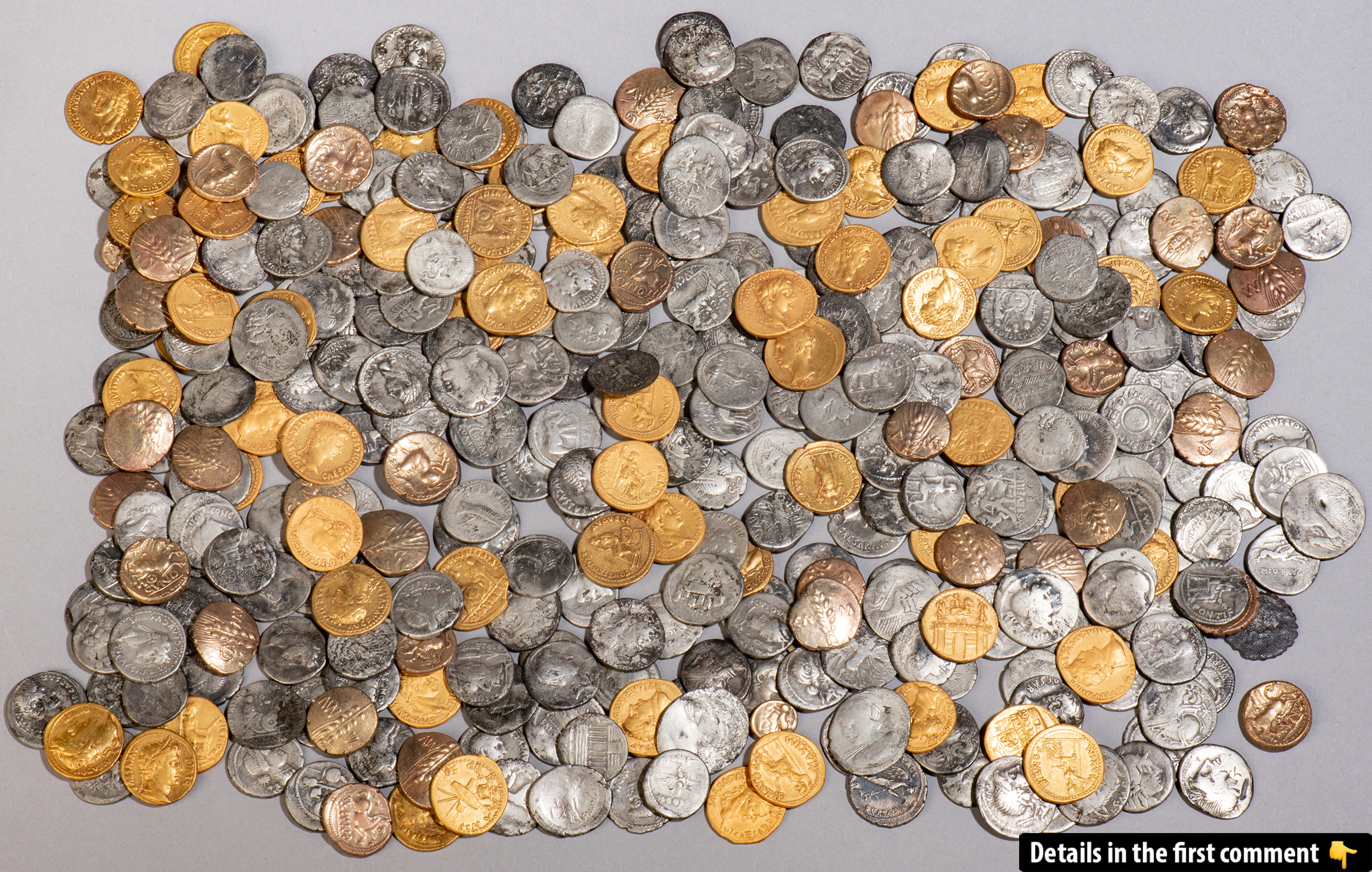In the quiet town of Bunnik, located in the Netherlands, a stunning archaeological discovery has shed light on the complex connections between the Roman Empire and ancient Britain. Metal detectorists uncovered a treasure trove of over 400 coins, dating back almost 2,000 years. This rare find, consisting of both Roman and British coins, offers an unprecedented glimpse into the military and economic interactions between the two powerful civilizations. As researchers eagerly dive into the history behind the hoard, this discovery is changing the way we view the Roman Empire’s reach and influence in northern Europe.
The Treasure Revealed
The hoard found in Bunnik consists of 404 coins, predominantly made of gold and silver, offering a rare glimpse into the wealth and trade practices of the ancient world. Among these coins, 116 are gold, including Roman aurei, which were minted during the reigns of emperors Augustus, Tiberius, and Claudius, spanning from 19 B.C. to 47 A.D. Also present are 44 gold staters from Britain, issued by Cunobeline, the King of the Britons, whose reign lasted from approximately A.D. 9 to 42.
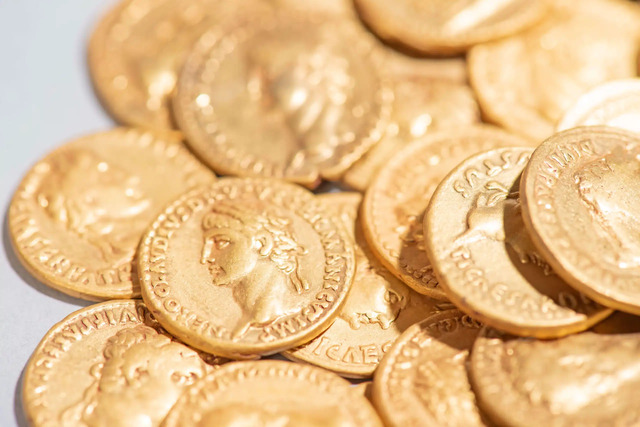
The Roman historian Suetonius noted Cunobeline’s trade connections with Rome, exchanging vital commodities like grain and metals. These coins offer valuable evidence of the ancient trade routes that spanned from the heart of the Roman Empire to the far reaches of the British Isles.
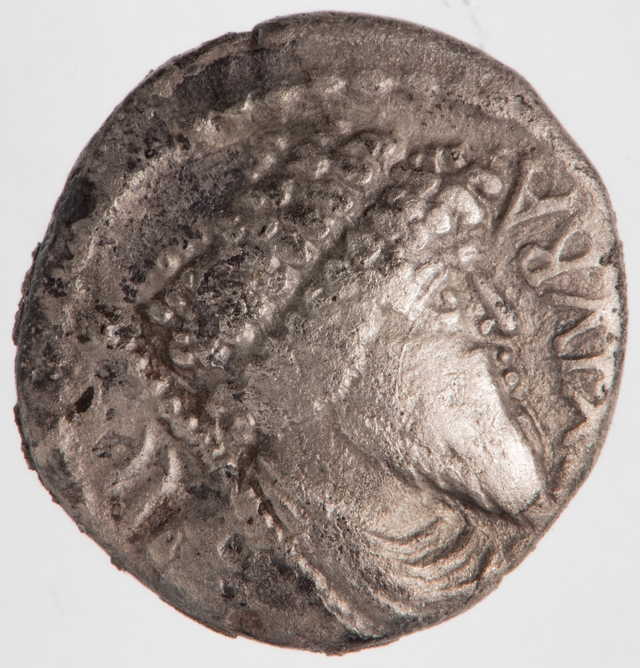

The remaining 288 coins are silver denarii, struck between 200 B.C. and A.D. 47. These coins are a testament to the power and reach of the Roman Empire, with some depicting the legendary Julius Caesar and others showcasing the image of Juba I, the King of Numidia in North Africa. This variety of coins, ranging from gold to silver, offers a fascinating look at the Roman economy and its cultural and political connections across vast distances.
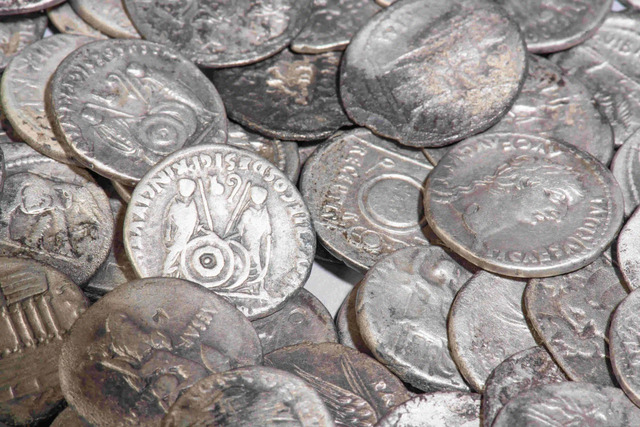
Video
Watch the video to uncover the mystery behind a 2,000-year-old coin, shedding new light on Iron Age politics. This discovery is truly groundbreaking!
Historical Context: Who Were the Owners?
The significance of this hoard goes beyond the material wealth it represents. Archaeologists believe the coins were likely buried around A.D. 47 by a Roman soldier returning from Britain, where the Romans had been engaged in military campaigns. The presence of both Roman and British coins suggests that the soldier received the Roman coins as pay for his military service and the British coins as spoils of war or tributes from the conquered Britons.

The Rhine River, which served as the northern frontier of the Roman Empire, was a strategic location for Roman military campaigns. The soldiers stationed along this border were tasked with defending against Germanic tribes and securing territories in Britain. This hoard, likely a soldier’s hidden treasure or offering to the gods after surviving battle, provides a glimpse into the personal lives of the men who served in these far-flung outposts of the Empire.
Uncovering the Past: How the Coins Were Discovered
The discovery of the hoard in Bunnik was made possible by the diligent work of metal detectorists Reinier Koelink and Gert-Jan Messelaar, who unearthed the treasure in the fall of 2023. The two men reported their find to the Archaeology Reporting Point of Landschap Heritage Utrecht, prompting an immediate investigation by the Cultural Heritage Agency of the Netherlands. What followed was a thorough excavation and study of the site, which revealed that the coins had been buried in a wetland area near a small watercourse, making it an unlikely location for agricultural or construction use during the 1st century.
The team’s analysis determined that the coins had been buried as part of a single deposition, although some scattering occurred due to later agricultural activity. The strategic placement of the hoard in a remote location further supports the theory that it was hidden for safekeeping or as an offering.
The Coins in Detail: What Do They Tell Us?
The Roman coins in this hoard are not just a reflection of the wealth and power of the Roman Empire but also an invaluable source of information about the ancient world’s economy and politics. The 116 gold coins, primarily the Roman aurei, would have been highly valuable in their time, used to pay soldiers, fund military campaigns, and maintain the economy. The fact that these coins are in such excellent condition, with no signs of wear or circulation, suggests that they were either buried soon after being minted or hidden as a means of preserving their value.
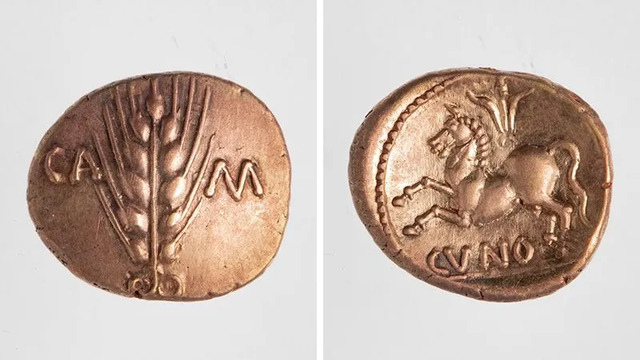
The 44 British gold staters minted by Cunobeline offer a fascinating look at Britain’s relationship with Rome. Cunobeline’s reign coincided with the height of Roman power, and the fact that his coins were found alongside Roman currency suggests that the two civilizations engaged in complex trade and diplomatic relations. The discovery of coins bearing the name “CVNO,” an abbreviation for Cunobeline, further highlights the significant role this Celtic king played in the cultural and economic exchanges between Rome and Britain.
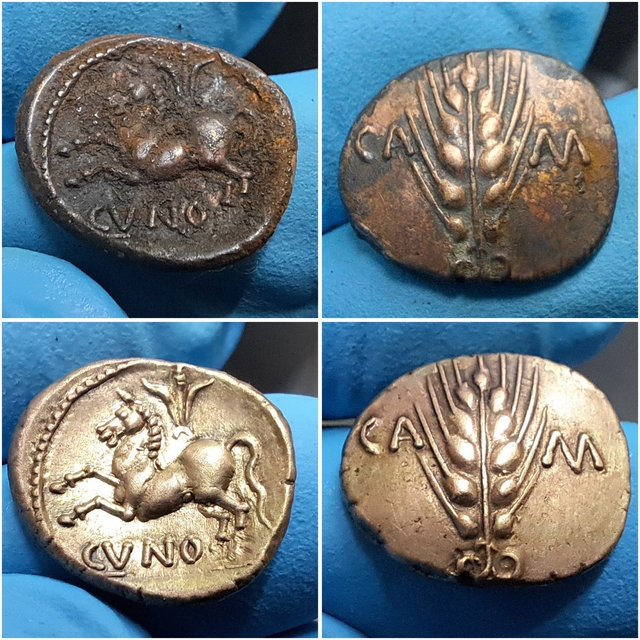
Theories Behind the Burial: Why Were the Coins Hidden?
The reasons behind the burial of the hoard remain a subject of debate among archaeologists. Some believe that the coins were hidden by the Roman soldier as a form of insurance, to be retrieved later when it was safe to do so. Others suggest that the hoard may have been buried as a tribute to the gods, offering thanks for the soldier’s survival in battle. Given the political and military context of the time, it is also possible that the hoard represents a symbol of wealth and status, hidden away for future use or as a sign of the soldier’s loyalty to the Roman Empire.

The fact that this hoard includes both Roman and British coins is particularly intriguing, as it sheds light on the military and economic connections between the two regions. It is likely that the Roman soldiers who participated in the conquest of Britain between A.D. 43 and 47 passed through the region where the hoard was found, either during their campaigns or on their return to mainland Europe. The presence of British coins in the hoard suggests that they may have been distributed as war booty or tributes to the soldiers who fought in Britain.

The Impact of the Discovery
This discovery is of immense significance for historians and archaeologists alike, as it provides new insights into the Roman Empire’s expansion into northern Europe and Britain. The hoard offers a unique perspective on the economic and military history of the time, highlighting the complex relationships between the Romans and the Britons. The presence of both Roman and British coins in the same hoard underscores the interconnectedness of these two ancient civilizations, providing evidence of trade, military conquest, and political alliances.
The hoard is also the largest Roman-era coin find ever discovered in the Dutch province of Utrecht, making it a rare and valuable addition to the National Museum of Antiquities’ collection. The coins are now on display as part of an ongoing exhibition, “The Netherlands in Roman Times,” where they are available for further study and exploration.
Video
Check out the video to see the incredible discovery of 1,000-year-old pure gold coins in Israel. This rare find offers a glimpse into ancient wealth and history!
Conclusion: Connecting the Dots in History
The discovery of the hoard in Bunnik offers a fascinating window into the past, shedding light on the military, economic, and cultural exchanges between the Roman Empire and ancient Britain. As researchers continue to study the coins and their context, this find will undoubtedly deepen our understanding of the ancient world and the complex networks that connected its various civilizations. This remarkable discovery highlights the power of archaeology to reveal hidden stories from history, connecting us to a time long past and providing us with a glimpse of the people who shaped the world we know today.
